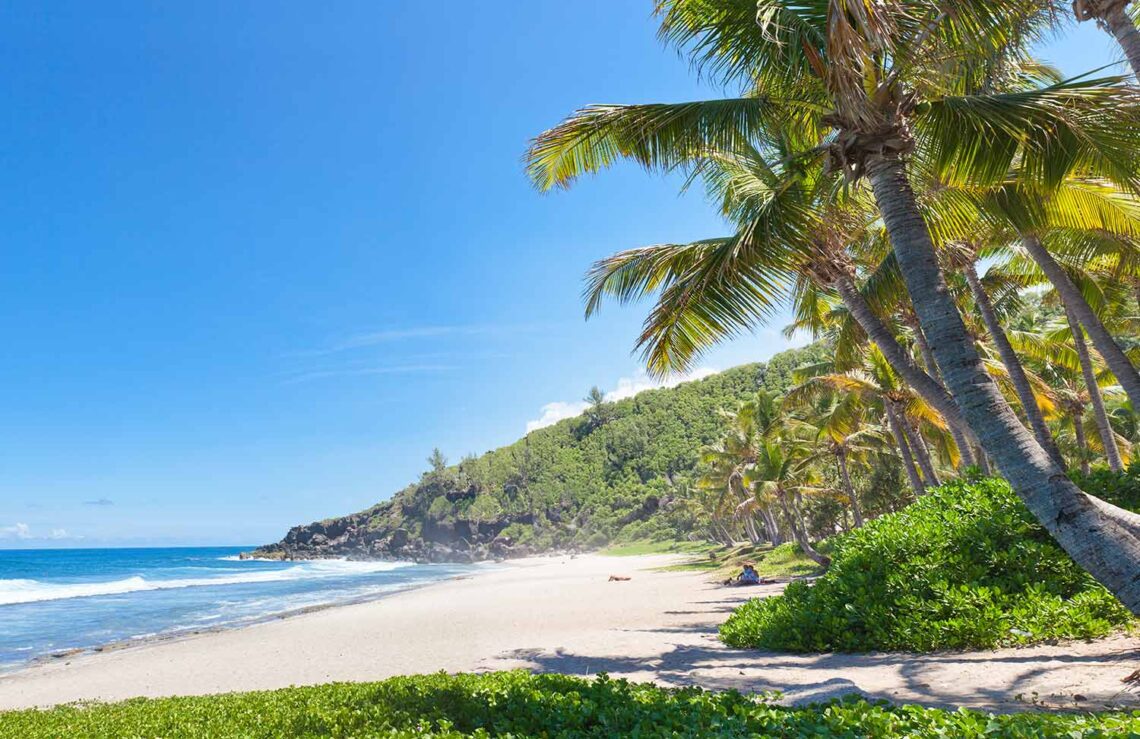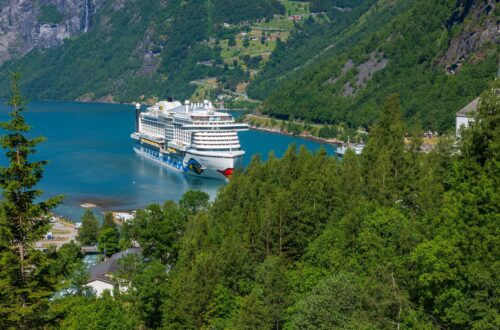Imagine stepping onto a beach where the sand is so soft it feels like walking on clouds, where turquoise waves whisper secrets of ancient mariners, and where time seems to pause, letting you breathe in pure tranquility. The Indian Ocean, a vast expanse cradling some of the world’s most breathtaking islands, is often called a “paradise on Earth” for good reason. From the quokka-filled shores of Rottnest Island to the coral-fringed atolls of the Maldives, these destinations offer a laid-back escape that feels like a warm hug from Mother Nature herself. In this article, I’ll take you on a journey through the Indian Ocean’s most serene islands, sharing stories, practical tips, and insider secrets to help you plan your own slice of paradise.
Why the Indian Ocean Feels Like Paradise
The Indian Ocean is a treasure trove of islands that blend pristine beaches, vibrant marine life, and rich cultural tapestries. Unlike the bustling Caribbean or the crowded Mediterranean, these islands maintain a slower pace, where locals greet you with genuine smiles and the environment feels untouched by mass tourism.
A Melting Pot of Cultures and Nature
Spanning from Africa to Australia, the Indian Ocean hosts islands shaped by African, Arab, Indian, and European influences. This diversity creates unique experiences, from spice-scented markets in Zanzibar to Creole rhythms in Mauritius.
The Allure of Untouched Beauty
Many islands, like Pemba and Rodrigues, remain off the radar, offering unspoiled landscapes and authentic experiences. Their remoteness ensures a peaceful retreat, far from the clamor of mainstream tourist traps.
Rottnest Island: Quokkas and Quiet Charm
Off the coast of Western Australia, Rottnest Island is a gem that’s gained fame for its adorable quokkas—tiny marsupials that seem to smile for selfies. But beyond the Instagram hype, this car-free island offers a laid-back vibe that’s hard to resist.
A History of Resilience
Once an Aboriginal prison, Rottnest has transformed into a model of eco-conscious tourism. Volunteers and rangers work tirelessly to preserve its salt lakes, coral reefs, and quokka population, ensuring visitors leave with memories, not footprints.
Things to Do on Rottnest Island
- Cycle the Island: Rent a bike to explore 63 beaches and 20 bays, dodging quokkas lounging on the paths.
- Snorkel the Reefs: Dive into crystal waters at Parker Point for vibrant coral and fish.
- Join a Quokka Walk: Guided tours teach you about these “happiest animals on Earth” and their conservation.
Pros and Cons of Visiting Rottnest
| Pros | Cons |
|---|---|
| Car-free, peaceful exploration | Limited accommodation options |
| Stunning beaches and wildlife | Ferry schedules can be restrictive |
| Eco-friendly tourism practices | Summer crowds (December-February) |
Tip: Visit during Little Quokka’s Big Birthday Weekend (September 21-22, 2025) for family-friendly festivities.
The Maldives: Overwater Bliss
If you’ve ever dreamed of waking up in an overwater villa with fish swimming beneath your floor, the Maldives is your paradise. This archipelago of 1,200 islands is synonymous with luxury and seclusion, perfect for honeymooners or anyone craving solitude.
A Honeymooner’s Haven
Resorts like Conrad Maldives Rangali Island offer experiences like dining in an underwater restaurant, surrounded by reef sharks and turtles. The dhoni-inspired suites at COMO Cocoa Island feel like living on a private boat.
Sustainable Luxury
Despite its jet-set appeal, the Maldives is tackling climate change with coral propagation projects. Resorts like Soneva Fushi nurture hardy corals to protect their fragile reefs, balancing tourism with conservation.
Activities in the Maldives
- Snorkeling and Diving: Explore vibrant reefs teeming with manta rays and whale sharks.
- Spa Retreats: Indulge in Ayurveda-inspired treatments at world-class wellness centers.
- Island Hopping: Take a seaplane to visit local islands and learn about Maldivian culture.
Maldives vs. Seychelles: A Quick Comparison
| Feature | Maldives | Seychelles |
|---|---|---|
| Beach Type | Powdery white sand | Granite-framed shores |
| Activities | Water sports, spa | Hiking, wildlife tours |
| Accessibility | Seaplane or boat transfers | Catamaran or ferry |
| Vibe | Secluded luxury | Adventurous relaxation |
Tip: Book from April to May or October to November to avoid peak crowds and enjoy pleasant weather.
Zanzibar: Spice and Soul
Zanzibar, off Tanzania’s coast, is a cultural mosaic where African, Arab, and European influences blend into a vibrant tapestry. Its UNESCO-listed Stone Town and pristine beaches make it a must-visit for history buffs and sun-seekers alike.
Stone Town’s Timeless Charm
Wander through Stone Town’s labyrinthine alleys, where spice markets and colonial architecture tell stories of sultans and traders. Breakfast at Stone Town Cafe is a must for a taste of local flavors.
Beachside Serenity
After exploring the city, retreat to resorts like Zanzibar Serena Hotel for sunset cocktails on the terrace. Beaches like Nungwi and Bwejuu rival the Maldives for beauty but at a fraction of the cost.
Why Visit Zanzibar?
- Spice Tours: Discover why it’s called the “Spice Island” with tours of clove and nutmeg plantations.
- Diving: Explore coral reefs in the Pemba Channel, home to barracudas and whale sharks.
- Cultural Immersion: Visit the Freddie Mercury Museum, celebrating the Zanzibar-born icon.
Pro Tip: Avoid the rainy season (March-May) for the best beach experience.
Pemba Island: The Green Escape
Pemba Island, Zanzibar’s quieter neighbor, is a verdant paradise where clove-scented air and untouched reefs create a sense of stepping back in time. It’s perfect for travelers seeking authenticity over luxury.
Diving into the Deep
Pemba’s waters are an “underwater safari,” with nutrient-rich currents attracting whale sharks and manta rays. Dive sites like Misali Island are still being mapped, offering a sense of discovery.
Cultural Riches
Visit the ruins of Ras Mkumbuu to explore ancient Swahili history, or join locals for a traditional sega tambour dance during festive evenings. Pemba’s warm community makes every visitor feel like family.
Pros and Cons of Pemba Island
| Pros | Cons |
|---|---|
| Untouched by mass tourism | Limited luxury accommodations |
| World-class diving spots | Harder to reach than Zanzibar |
| Rich cultural experiences | Basic infrastructure |
Tip: Stay in locally owned guesthouses for an authentic experience and to support the community.
Rodrigues Island: The Ultimate Disconnect
Rodrigues, 560 kilometers east of Mauritius, is one of the world’s most remote inhabited islands. Its rugged cliffs, secluded coves, and Creole culture make it a haven for those seeking simplicity.
A Slower Pace of Life
Local fisherman Jean-Paul Perrine says, “Life here moves with the tides.” Rodrigues’ isolation preserves its traditions, from sega tambour music to home-cooked Creole meals.
Adventure Awaits
Kitesurf in the expansive lagoon, hike to hidden beaches, or visit Île aux Cocos for castaway vibes. The island’s trails offer breathtaking views that rival any postcard.
What to Pack for Rodrigues
- Reef-safe sunscreen: Protect the delicate marine ecosystems.
- Hiking shoes: For exploring rugged trails.
- Light clothing: The island’s warm climate calls for breathable fabrics.
Tip: Stay at Tekoma Boutik Hotel for cozy accommodations and easy access to Port Mathurin’s lively market.
Seychelles: Granite and Grace
The Seychelles’ 115 islands are a blend of granite-framed beaches and lush interiors, offering a paradise that’s both adventurous and relaxing. From Mahé’s bustling Victoria to La Digue’s laid-back charm, there’s something for everyone.
Wildlife and Wonders
Spot giant tortoises on Moyenne Island or explore the Vallée de Mai on Praslin, a UNESCO site with prehistoric palms. The Seychelles is a biodiversity hotspot, perfect for nature lovers.
Laid-Back Luxury
Resorts like The Oberoi on Mauritius offer beachfront villas, but smaller islands like La Digue let you cycle through takamaka-lined roads for a more intimate experience.
Activities in the Seychelles
- Island Hopping: Take a catamaran to explore remote atolls like Alphonse.
- Birdwatching: Aride Island hosts 18 species of seabirds.
- Beach Days: Anse Lazio and Anse Georgette are among the world’s most beautiful beaches.
Tip: Visit from April to May or October to November for ideal weather and fewer crowds.
Mauritius: Beyond the Beach
Mauritius is more than just powder-white sands—it’s a cultural melting pot with volcanic interiors, colonial history, and vibrant festivals. It’s perfect for travelers who want a mix of relaxation and exploration.
Cultural Diversity
From the sacred Grand Bassin lake to the bustling markets of Port Louis, Mauritius blends Indian, African, and Creole influences into a rich tapestry. Try Creole seafood for a taste of the island’s soul.
Adventure and Relaxation
Hike Black River Gorges National Park or snorkel in Turtle Bay’s marine park. Resorts like The Oberoi offer luxury, while smaller guesthouses provide a local touch.
Mauritius vs. Maldives: Which to Choose?
| Feature | Mauritius | Maldives |
|---|---|---|
| Cultural Depth | Rich history and festivals | Limited cultural focus |
| Activities | Hiking, history tours | Water sports, spa |
| Cost | More budget-friendly | High-end luxury |
| Accessibility | Direct flights from Europe | Requires transfers |
Tip: Visit Île aux Cerfs for a day trip to a pristine islet with world-class snorkeling.
People Also Ask (PAA)
What is the best Indian Ocean island for a laid-back vacation?
Pemba Island and Rodrigues are top picks for their untouched beauty and lack of crowds, offering authentic experiences and serene beaches.
Where can I find the best diving in the Indian Ocean?
The Maldives and Pemba Island are diving havens, with vibrant coral reefs and marine life like manta rays and whale sharks.
What are the best tools for planning an Indian Ocean trip?
Use Skyscanner for flights, Booking.com for accommodations, and Viator for tours. Local guides like Mauritius Conscious offer sustainable itineraries.
When is the best time to visit the Indian Ocean?
May to September offers dry, pleasant weather across most islands, though microclimates vary. Check specific destinations for optimal timing.
Planning Your Indian Ocean Escape
Informational: Understanding the Region
The Indian Ocean spans 70 million square kilometers, hosting islands with unique ecosystems and cultures. From Madagascar’s lemurs to Seychelles’ giant tortoises, biodiversity is a major draw. Research local customs and conservation efforts to travel responsibly.
Navigational: Where to Book Your Trip
- Flights: Check Kayak for deals to hubs like Mauritius or Malé.
- Ferries: Sealink and Rottnest Express operate to Rottnest Island; catamarans connect Seychelles’ islands.
- Tours: Book eco-conscious tours through Wildfoot Travel for wildlife-focused itineraries.
Transactional: Best Tools for Your Trip
- Travel Apps: Download TripIt for itinerary planning and XE Currency for real-time exchange rates.
- Gear: Invest in reef-safe sunscreen and a waterproof phone case for water activities.
- Guides: Lonely Planet’s Indian Ocean Islands guidebook offers detailed insights for off-the-beaten-path adventures.
A Personal Story: My Rottnest Revelation
Last year, I visited Rottnest Island, expecting quokka selfies and little else. But cycling past pink salt lakes at sunset, with quokkas hopping nearby, felt like stepping into a painting. A local ranger shared stories of the island’s Aboriginal history, adding depth to the beauty. It reminded me that paradise isn’t just about beaches—it’s about connection, to nature and people.
FAQ
Q: Are Indian Ocean islands safe for solo travelers?
A: Yes, islands like the Seychelles and Mauritius are safe, with welcoming locals and well-developed tourism infrastructure. Always check travel advisories and stick to reputable accommodations.
Q: How can I travel sustainably in the Indian Ocean?
A: Choose eco-friendly resorts, support local businesses, and use reef-safe products. Join conservation projects like coral planting in the Maldives for a hands-on impact.
Q: Which Indian Ocean island is the most budget-friendly?
A: Zanzibar and Mauritius offer affordable guesthouses and dining compared to the Maldives’ luxury resorts. Look for deals on Agoda for budget stays.
Q: Can I visit multiple islands in one trip?
A: Absolutely! Cruises like those offered by Wildfoot Travel let you hop between Seychelles, Mauritius, and Madagascar, blending relaxation and adventure.
Q: What’s the best way to get to remote islands like Rodrigues?
A: Fly to Mauritius, then take a 20-seater plane to Rodrigues. Book through Air Mauritius for seamless connections.
Conclusion: Your Paradise Awaits
The Indian Ocean’s laid-back islands—Rottnest, Maldives, Zanzibar, Pemba, Rodrigues, Seychelles, and Mauritius—are more than just destinations; they’re invitations to slow down and savor life. Whether you’re cycling past quokkas, diving into coral reefs, or sipping cocktails in Stone Town, these islands offer a rare blend of serenity and adventure. Plan your trip with care, respect local cultures, and let these paradises remind you that sometimes, the best moments are the ones where you simply stop and breathe.




